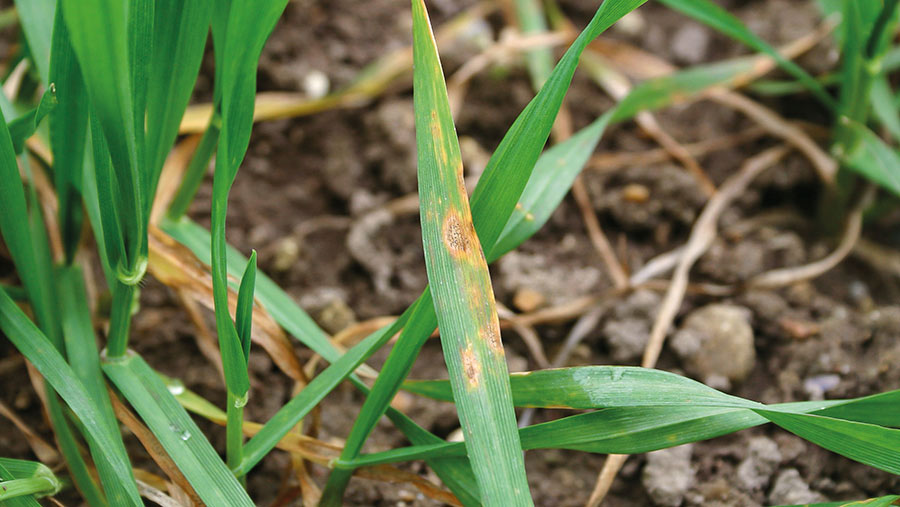Multisites can extend life of single-site popular cereal fungicides
 © Blackthorn Arable
© Blackthorn Arable The use of a multisite protectant fungicide can double the effective life of single-site curative fungicides, such as SDHIs and azoles, for the control of septoria in wheat crops.
Data modelling work by Michael Grimmer, principal consultant for crop disease management at consultants Adas, shows that adding the multisite fungicide folpet to an azole-SDHI mix at T1 and T2 increased the effective life of that chemistry from 13 years to 21-27 years.
In addition, when the rates of the azole and SDHI were reduced the use of folpet further extended the life of these single-site products to 28 years.
See also: How a free test is keeping one wheat grower on top of disease
Multisite protectants, such as folpet, are largely unaffected by shifts in sensitivity leading to diseases becoming resistant to fungicides.
“Using the maximum rate of folpet with the minimum rates of single-site fungicides proved to be the best resistance management strategy,” Dr Grimmer tells Farmers Weekly.
Extended life
His modelling work looked at using folpet at 1.5 litres/ha at both the T1 and T2 spray timings in wheat along with the azole mefentrifluconazole + SDHI fluxapyroxad (Revystar), as an example of how a multisite could extend the life of single-site actives.
Folpet as a multisite protectant active is at little risk of resistance building up, and so its application is useful in prolonging the life of single-site actives where fungi can build up resistance to them.
These single-site actives have the advantage of systemic or curative activity as they can travel through the green leaves, whereas multisites are purely protective.
“Adding folpet at T1 and T2 gives effective control, even with partial resistance,” he adds.
When the once widely-used multisite chlorothalonil was banned in May 2020, attention shifted to the use of other multisites to help to delay resistance building up against main-line single-site fungicides, such as SDHIs and azoles.
Key wheat timing
Folpet is marketed as Arizona by agrochemicals group Adama, and has a maximum seasonal dose of 3 litres/ha, which typically can be used as two doses of 1.5 litres/ha at T1 and T2.
Andrew Bailey, fungicide technical specialist with the group, says that T1 is the key wheat timing for folpet in any scenario, while inclusion at the T2 stage will give improved persistence.
The timing and dose of the multisite will depend of the septoria resistance of wheat varieties.
For high-risk situations with susceptible varieties such as Barrel, Skyscraper and Gravity, he suggests three doses of 1 litre/ha each at T0, T1 and T2.
For moderately susceptible varieties, such as Costello and Gleam, he suggests 1.0-1.5 litres/ha at T1 and T2, and for moderately resistant ones, such as Graham, the dose should be 1.0 litres/ha at T1 and T2.
He adds that even for varieties with good resistance to septoria, a multisite still has a place and should be considered at a rate of 1.0-1.5 litres/ha at T1 for varieties such as Champion, Typhoon, Extase, Mayflower and Theodore.
In addition, folpet now has the control of barley ramularia on its product label, and Mr Bailey says this moderate level of control is very useful with the key timing being at T2 for winter and spring barley.
Adama is part of the Syngenta Group, which in turn is owned by ChemChina, a Chinese state-owned enterprise.
The two speakers were attending a recent online Adama briefing on the role of multisite fungicides.

